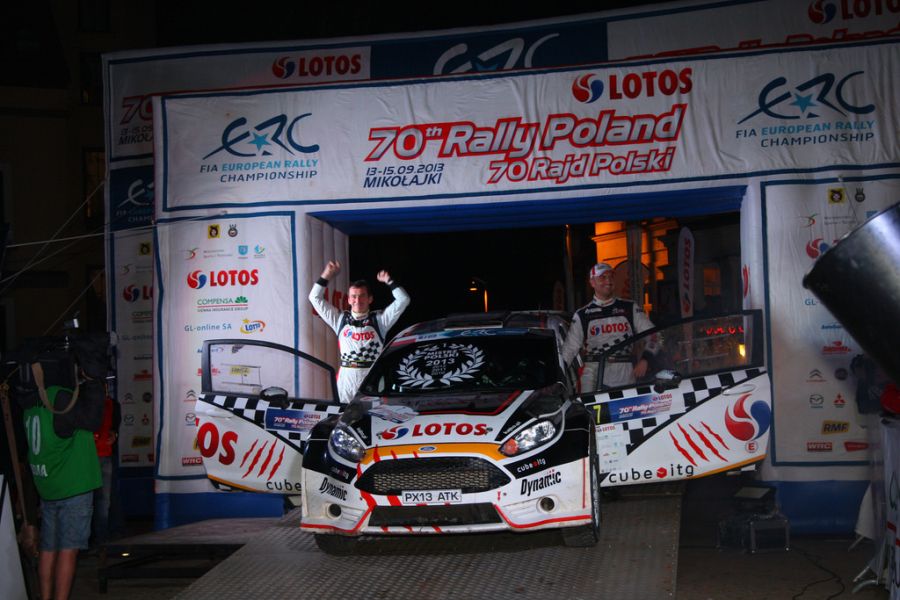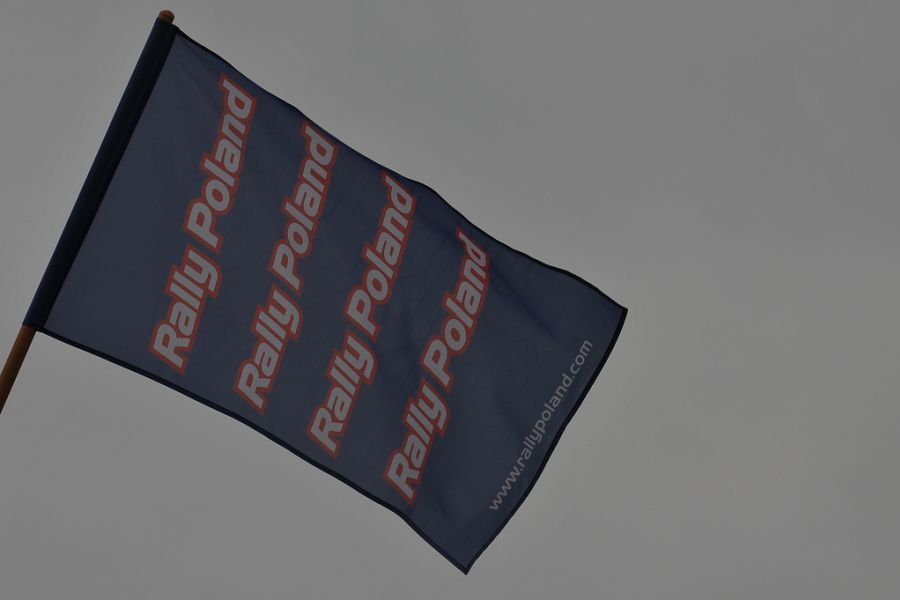Rally Poland or Rajd Polski – the second oldest rally event in the world
The Rally Poland, or Rajd Polski on Polish, is the second oldest rally event in the world, established in 1921. The only older event is the Rallye Monte-Carlo.
Rally Poland was one of thirteen rounds of the inaugural FIA World Rally Championship in 1973 but it was removed from a calendar in 1974. Later it was mostly a part of the European Rally Championship, same as today, with a brief return to the WRC calendar in 2009 and then again between 2014 and 2017.

Rally Poland is one of the oldest rally events in the world
Six participants in the first-ever Polish rally in 1921
The first edition of the Polish rally took place in June 1921. The 500-km route of the three-day event led from Warsaw to Bialowieza and back. Among six participants, Tadeusz Heyne in a Dodge car was the fastest one, earning a place in the history as the first ever winner of the second-oldest rally in the world.
In the following years, the route of the rally was lengthening and in 1925 it reached the length of 3680 kilometers. The number of participants was also growing up, from nine in 1922, sixteen in 1923, to fifty-five in 1924. Seventeen crews participated in the fifth edition in 1925. In 1926, the rally was canceled due to an economic crisis.
Rally Poland was crossing borders in 1929
There were three more events from 1927 to 1930, then the event was canceled again from 1931 to 1936. Rally was reinstated for three more years from 1937 to 1939 before the World War II stopped all racing activities.
In 1929, Rally Poland visited some other countries for the first time because the route was going over Germany and Czechoslovakia. The biggest number of sixty-two participants appeared at the start in 1938.

Rally Poland has a long history
Communist authorities banned the event
After the World War II, the Rally Poland was revived in 1947 on the 2,500-km route, starting and finishing in Warsaw, with 51 crews participating. Eighty crews participated in the 14th edition in 1948 but a popularity of the event didn’t prevent communist authorities to ban a rally for next five years.
In 1954, the Polish rally has been revived again as the national championship event. It remained in that status until 1959, although there were some foreign crews.
Part of the European Rally Championship since 1960
The 20th edition of Rally Poland, that took place in September 1960, was the round of the European Rally Championship for the first time. It was the major international rally competition in that time. The rally headquarter was in Zakopane and German driver Walter Schock won the rally in a Mercedes-Benz 220SE.
Mercedes-Benz was the winning car for three more years in a row, with Eugen Böhringer winning in 1961 and 1962, and Dieter Glemser winning in 1963.

Sobieslaw and Ewa Zasada scored their fourth win at Rally Poland in a BMW 2000 tii
Four victories of Sobieslaw Zasada
The Polish driver Sobieslaw Zasada scored his first win at Rally Poland in 1964, sharing a Steyr Puch 650 TR with his wife Ewa Zasada as a navigator. In the next seven years, Zasada recorded three more wins to became the record-holder and still the only driver with four wins. His victorious cars were Porsche 912 (1967), Porsche 911 (1969) and BMW 2002 tii (1971). In all four wins, his navigator was Ewa Zasada.
The other winners in that period were Rauno Aaltonen (1965, Morris Cooper), Tony Fall (1966, BMC Mini Cooper S 1000), Krzysztof Komornicki (1968, Renault 8 Gordini), Jean-Claude Andruet (1970, A110 1600) and Raffaele Pinto (1972, Fiat 124 Spider).

Achim Warmbold and Jean Todt won the 1973 Rally Poland in the #4 Fiat Abarth 124 Spider
The 1973 Rally Poland was the WRC event
In 1973, the World Rally Championship had been established and Rally Poland became the seventh round of the 13-event calendar. The rally headquarter was in Krakow and the rally featured 55 stages over 742 kilometers.
It turned out to be one of the most unusual and hardest rallies in the history because only three crews ended the rally among 62 starters. The winners were Achim Warmbold and his navigator Jean Todt in a Fiat Abarth 124 Rallye. Many organizational errors also marked the event and Rally Poland lost its WRC status in 1974.
A bizarre crash prevented Zasada to win the fifth time
In 1974, Rally Poland was again a part of the European Rally Championship. The event was again marked by catastrophic organizational errors and incidents.
One of those incidents caused a retirement for Sobieslaw Zasada who crashed with his Alpine-Renault into judge’s car from opposite direction. The victory went to Klaus Rüssling in a Porsche 911 Carrera RS.
The integral part of the European Rally Championship
After returning to the ERC calendar, the event remained the ERC fixture for more than two decades, until 2008. In 1975, the rally moved its headquarter to Wroclaw in Lower Silesia and stayed there until 1997. Due to a fuel crisis, the rally has been canceled between 1981 and 1983. The rally was relocated back to Krakow in 1997 and then again to Lower Silesia in 200.
Some of the world famous winners were Bernard Darniche (1977, Lancia Stratos HF), Piero Liatti (1991, Lancia Delta Integrale) or Erwin Weber (1992, Mitsubishi Galant VR-4). Two drivers scored three wins in that period – Robert Droogmans (1989, 1990, 1993) and Krzysztof Holowczyc (1996, 1998, 2005).

2009 Rally Poland podium
Mikolajki hosted Rally Poland as WRC event in 2009
In 2005, the Rally Poland was moved to Mikolajki in the Masurian Lake District with a longstanding plan to get WRC cars back to Poland. After being run as a candidate event for several years, the Rally Poland returned to World Rally Championship in 2009.
Mikko Hirvonen won the rally in a Ford Focus RS WRC, sharing a victory with his navigator Jarmo Lehtinen. They shared a podium with Dani Sordo/Marc Marti (Citroen) and Henning Solberg/Cato Menkerud (Ford). The Junior WRC class winner was Kevin Abbring in a Renault Clio R3.

Kajetan Kajetanowicz at 2013 Rally Poland
Kajto won three times between 2010 and 2013
In 2010, the Rally Poland lost its WRC status and returned to the European Rally Championship. The Polish driver Kajetan Kajetanowicz ‘Kajto’ scored his first win in a Subaru Impreza STi. He repeated a victory with the same car in 2011.
Esapekka Lappi won the rally in 2012 in a Škoda Fabia S2000 and then Kajto scored his third victory in 2013, driving a Ford Fiesta R5.
Rally Poland as WRC event again between 2014 and 2017
In 2014, the Mikolajki-based event became a part of the World Rally Championship again. Sebastien Ogier, a man who dominated in the championship, also won Rally Poland in a Volkswagen Polo WRC. He repeated a victory next year. In both events, he defeated his teammate Andreas Mikkelsen.
Mikkelsen finally won Rally Poland in his third attempt in 2016, again driving a Volkswagen Polo WRC. In 2017, Thierry Neuville won a gravel rally in a Hyundai i20 Coupe WRC. Some organizational mistakes marked the event and for the 2018 WRC season, it was replaced by Rally Turkey. The Polish rally became a part of the European Rally Championship again.

Sebastien Ogier triumphed two times at Rally Poland
Photos: FIA ERC, Wikipedia, Rajd Polski, Ondrej Zeman,









